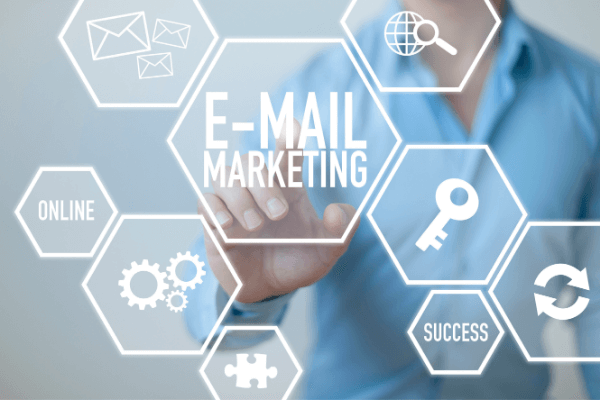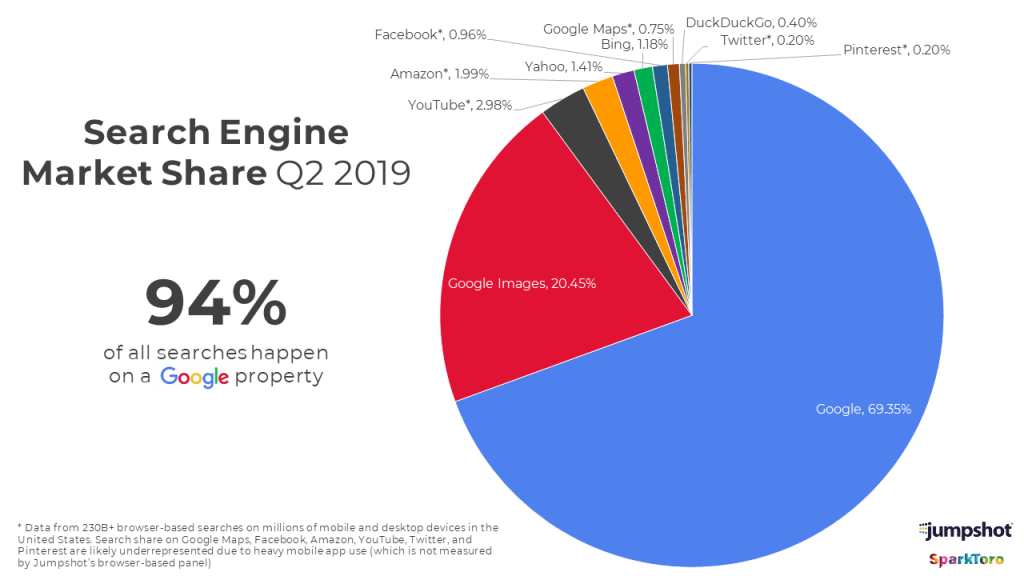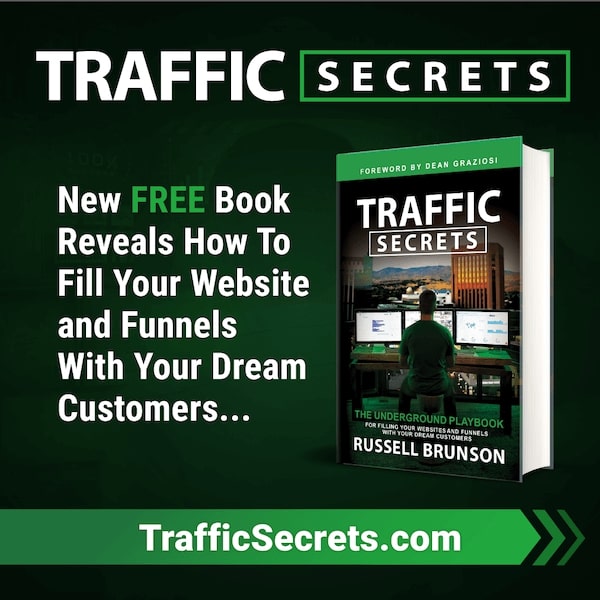The Evolution of Internet and Internet Marketing
Its been more than 50 years since the foundation of the modern internet was laid in 1969. What started as a military experiment, conducted in the context of the Cold War, has now transitioned to more than 4 Billion internet users around the world, on devices which outnumber the human population by 1:4 . This phenomenal growth of internet has led to a boom in marketing opportunities, both for big brands and the common man who can hope to start a business online with no inventory, limited investment and still earn a decent living if he / she can market their products / services well.
If you were born in 1980s or 1990s, chances are you grew up seeing traditional marketing focussed Advertisements on TV, Radio and Print (Newspapers, Magazines, Print). The market today has evolved considerably. With much of the population having basic internet access, the focus has now shifted from traditional marketing to Internet marketing.
What is Internet Marketing?
Internet marketing or Online Marketing, is the process of advertising or promoting a business or brand and its products or services over the internet using tools that help drive traffic, leads, and sales.
Internet marketing includes a broad range of marketing strategies such as SEO, Social Media, Paid Media, email etc. The end goal, like any other marketing effort, is to try to get as many people to watch your offer and convert them into paying customers.
While marketing strategies on the internet share some similarities to that of TV, radio and print, they also differ given the numerous options the online platform provides to target your customers. Unlike the traditional marketing of TV or print, there are different types of internet marketing strategies which you can use to reach customers.
What are the different types of Internet Marketing Strategies:
Listed below are a few:
- SEO - Search Engine Optimization
- SEM - Seach engine Marketing
- PPC - Pay Per Click or Pay Per Call
- Content Marketing
- Social Media Marketing
- Email Marketing
- Influencer Marketing
- Affiliate Marketing
Let us take a deep dive in each of the above categories. We will also share some best practices to help you maximise your returns.

1. Search Engine Optimization (SEO)
SEO or Search Engine Optimization marketing is an online marketing strategy that is centered around getting your content / post etc. ranked under the results of the search engines like Google, Yahoo!, and Bing. Since 94% of all searches happen on Google, its imperative, that for your SEO marketing strategy to work, your content should be recognized and ranked by Google.
SEO is a term that is thrown a lot when it comes to internet marketing. To be able to understand how SEO marketing works, its important to understand how search engines operate.
The search engine runs on an indexing software program that crawls the web. After “reading” billions of web-pages, the search engine indexes and categorizes these pages and then decides which of these pages are most valuable. Read here for a detailed analysis on how indexing / crawling works.
If your blog post has the words Katy and Perry, the Google indexing machine will think it is about Katy Perry. If someone searches on Google about Katy Perry, then Google may show your website under search results.
As a marketer, you definitely want to be on the first page of Google search engine results pages (SERPs).
How do you do it?
You do it with Search Engine Optimization (SEO).
There are two SEO methods by which you can optimize your webpages. The first is On-page SEO, and the second is Off-page SEO.
On-Page SEO
On page SEO refers to all the actions that you take on your pages which help improve its position in the search engine rankings. These refer to all the action that are within your control.
Listed below are the key factors that drive On-Page SEO:
Keyword Selection
Keyword selection is one of the most important factors for On-Page SEO. A keyword is a phrase that a user types in a search engine. When Google indexes a page, it looks for the relevant keywords to determine what the page is all about. This factor coupled with others such as content structure, relevancy etc. decide how your page will be ranked under Google Search Engine results. E.g. Google will not show your page to a user looking for Katy Perry if these words are not found in your article. You need to use the right keywords so the search engine will index your web page that is related to that keyword.
Title and Meta-data
Your Post Title and Text snippet below should have the right keywords. Also, the title must be attractive and relevant enough, for the search engine to notice. An example of an unattractive and non relevant title phrase would be something like “My Thoughts Katy Perry,”. Not only is this phrase in wrong english, it is also a phrase which likely no one will search. You have better chances to rank if your post is titled something like “Katy Perry Divorces Russel Brand.”
Images
The content of your web page should have relevant images. Images make people stay, and the longer they stay, the more dwell time will be recorded making Google think that your website is giving value to the readers.
Content Quality
Your content should provide value. It has to be helpful, in-depth, and most importantly have something unique which none of your competitors have. If you publish relevant content, your users will be interested and hence stay longer, read your other contents, and show interest in general. All these actions add points when it comes to ranking with Google.
Page Speed
Faster websites offer a better experience. If your customers are leaving your pages because they load slowly, that sends a negative signal to Google. As such, Google will think that your page is not optimized enough to offer a great user experience and hence will dissuade from ranking your website page at the top.
Off-Page SEO
Contrary to On-Page SEO, the factors of which are within your control, Off Page SEO relates to all factors which happen off of your page like Backlinks, Media etc.
Listed below are the key factors that drive On-Page SEO:
Social Media References
If you have a social media post, which links to your blog, and that blog post is being shared on social media platforms, Google will indirectly get the hint that your post is relevant. Relevancy ranks high in the ranking parameters of Google
Domain Authority
Domain Authority or DA is rank given by search engines to determine strength of your website. Measured on a scale of 1-100, 1 being the lowest and 100 the highest, the authority of your website is primarily measured by factors such as how long has the domain been active, its history, no. of backlinks, number of 404 pages etc. The websites which have a higher domain authority receive preferential treatment in search result rankings than the ones which have low DA. Optimizing your website and following good SEO Practices can maximize your domain authority and improve your ranking
TIP:
Both On-page and Off-page SEO are equally important when it comes to rankings and one cannot be ignored over the other. While it is easier to work on On-page SEO, its important to remember that in order to climb the ladder of ranking smoothly, you should also put in efforts to build your backlinks, Social media references and Domain authority. You can build backlinks by doing guest posts or submitting articles on websites like Medium or commenting on questions on Quora. You can also join websites like Backlink Society which is a membership site where you can meet different bloggers, affiliate marketers and store owners who will swap backlinks with you for free.
See our detailed article here on the numerous ways of getting legitimate backlinks for free.
Remember - While it may look like a hassle getting backlinks, consider your website to be a long term asset. Any effort upfront will reap fruits in the future

2. Search Engine Marketing (SEM)
What is Search Engine Marketing?
Search Engine Marketing is a new marketing terminology often confused with SEO.
Search Engine Marketing or SEM is the process of marketing through the use of search engines. In simple parlance - this means advertising, specifically on search engines.
But isn’t this what SEO does?
No!
SEO and SEM sound similar but they are different.
The main difference between SEO and SEM is that SEO assists in ranking your website organically thus ensuring free traffic, while SEM is more targeted towards paid traffic.
Below is a comparison of SEO vs SEM
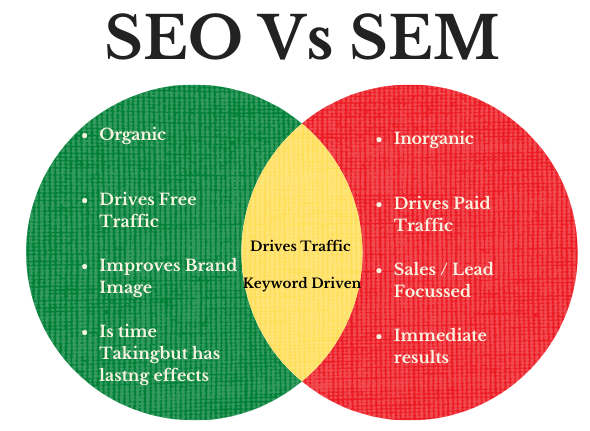
Most common ways to do SEM
Here are the most common ways to do SEM:
- Banner ads
- Product listing
- Text-based ads
- Video ads
Like SEO, the foundation of a successful SEM campaign is keyword selection. A successful SEM campaign should include keywords that have a high search volume.
You can use Google Trends or Google Keyword Planner Tool to look for keywords that have a high search volume. Once you have found the relevant keywords to use, you can create your ad on the search engine, and then decide how much you are willing to spend.
In short, SEM is very similar to paid advertising. What makes it complicated is the process with which you make it effective. It is easy to create ads, but choosing the right keywords, country, and other demographics is what makes it challenging. You also have to decide if you want to advertise on both mobile and desktop, or on only one device.
Is SEM Expensive?
Yes and no. While you are paying for clicks, each click you pay for can bring revenue that is far more valuable than the cost of the ad itself. For example, if you pay $3 per click, for an advertised product which brings you a revenue of $300, then your customer acquisition cost is merely 1% of your revenue.
However if you choose the wrong demographic to display your ad or your Ad is not attractive enough to drive conversion, the costs can quickly add up.

3. Pay Per Click or Pay Per Call (PPC) Marketing
On television, radio, and print, you pay for the time slot or space where your Ad is shown. The longer your Ad is, the more you pay.
This also happens in Internet Marketing. One of the common ways to advertise online is through PPC or Pay Per Click advertisements. In Pay Per Click advertising, you only pay if a person clicks on your Ad.
Often times, PPC is partnered with Pay Per Impression. In Pay per impression, you pay a certain amount for every 1,000 times your Ad was shown. Then, you get charged another cost if a user clicks on your Ad.
How do you configure a PPC Ad?
There are many ways to launch a PPC ad with the most common platforms being
- Google - Learn more about Google Ads here
- YouTube - Learn more about YouTube Ads here
- Social Media - Learn more about Facebook Ads here
The positive side about PPC Ads is that you are in control of your budget. In PPC marketing, you decide how much you want to pay for a click. The systems that launch your Ads will not charge you more than the amount you bid for a click. The negative side is that you have to pay a lot more money when it comes to advertising for high value keywords.
Here is an example of a PPC marketing on Google's search engine:
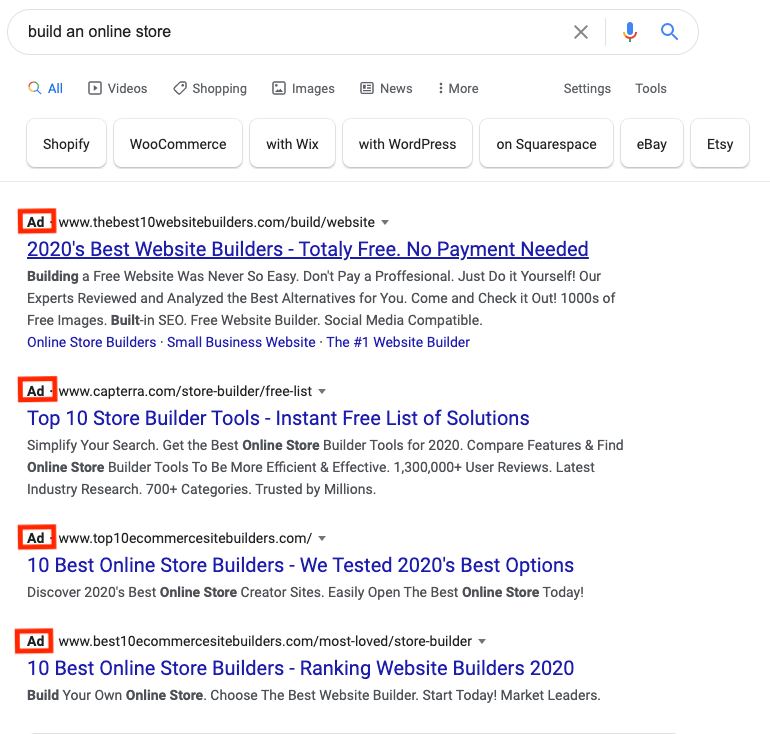
If you type “build online store,” you will notice that the top results are Ads. The companies that launched these Ads pay Google to show their blogs or websites to the users.
If you click on any of those, they will pay for that click. Hence the term Pay Per Click (PPC).
How much will you pay?
It depends. On every platform, there is a minimum bid for specific search words. It is like advertising on television. On TV, there are only a few spots for ads on each show, and advertisers bid to pay for these spots. You also do the same on PPC. If you bid $10 for each click, and your competitors only bid $3, it is very likely that your Ad will be shown more than theirs. This, however, does not mean that you will pay $10 per click. The platform algorithm will decide whether you should pay $4 or higher, but not higher than $10.
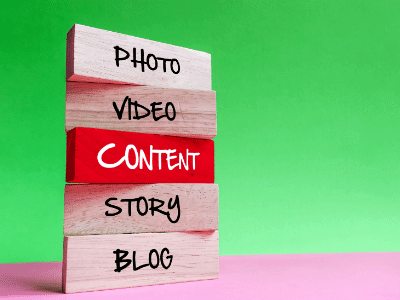
4. Content Marketing:
Content marketing is the process of creating content and marketing it to people who will consume your content.
The most common forms of content in Content Marketing are as below:
Blogging
You can build a website, and then post blogs or any form of written content. For e.g. this website is about making money and how to start your own website. You can also build a website blog around tech or finance, or a website about movie reviews, etc. Like Rotten Tomatoes, Looper, and more.
YouTube
On YouTube, you build a channel and then publish video content. You can do many types of videos, like tutorials, comparisons, product reviews, and more.
Podcast
This is the evolution of radio. On podcasts you talk and record your show, and then publish them on podcast channels. People can subscribe to your channel and listen to you regularly, much like they tune in to a radio show.
Blogging, Youtube and Podcasts are great ways of internet marketing which can help make money. On blogs you can promote affiliate items and generate commissions. Also you can promote your own ideas and business and make money. On YouTube you can make Ad money, though the monetization only starts when you get 1000 subscribers. Podcasts are the latest trend in making money. On Podcasts you can generate Ad revenue and you can promote other products as well. Also, like Youtube, you can also divert traffic to your website or blog through Podcasts and can make a handsome chunk if you have subscribers or listeners downloading your content. Take the example of Joe Rogan who recently scored a 100 million deal with Spotify through his podcast “The Joe Rogan Experience”
It’s important to bear in mind that Content marketing starts with creating the content. But it does not stop there. You need to actively promote your content so people can find them.
One good example of promotion is going to forums like Quora or Reddit. On these forums, you help people by answering their questions. In your answer, you provide a link to your blog, YouTube channel, or your podcast. As you do this, people who read your content will click on the link, and you will get traffic.
While many forums have strict rules about linking and marketing, you should do fine provided that you follow the rules and regulations and most importantly provide value through your answers. It is rare for people to report or ban you if you are providing help. Most people who get banned are those that are blatantly marketing their content without providing anything useful.
You can also market your content through Ads, or by collaborating with other content developers. You can swap backlinks, do interviews, and then have the interviewed person shout out to his fans about your interview.
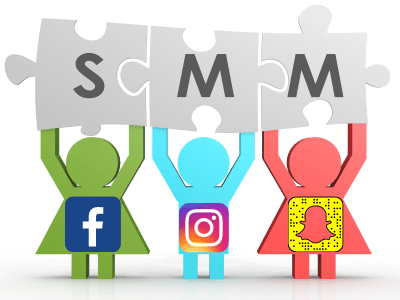
5. Social Media Marketing
Social media marketing infers to promoting or marketing your business / idea or blog through social media channels. Currently the market leaders in Social Media globally are Facebook, Instagram, TikTok, Snapchat, and Pinterest. In social media marketing, your main goal is to build your brand and get your brand name to the feed pages of the right people. You can do this by publishing content, creating a group, or paying for ads.
The two main ways to market your products or business on social media are Organic and Paid.
Organic Social Media Marketing
This refers to creating content on a social media channel, building a following, and then generating sale from these followers. Though time taking, you can do this by creating pages, posting products, and engaging with your followers and target customers.
Paid Social Media Marketing
If you advertise via social media, you can choose several campaign motives such as building a following, leading people to your website, making a sale, and much more. Social Media Paid advertising is a big puzzle and you have to be conscious of how you try to navigate through and not get banned. Check out our detailed post on it.
Both the above techniques are effective. What matters most on social media marketing is your capability to reach the right people. For one, you need to choose the right social media platform. You cannot expect to create a page on all social media channels and have people to follow you. Each social media channel has a different type of user base.
Here are some tips:
This is the most commonly used social media platform. Here you can promote all types of business and content since the consumers are highly diversified and come from all demographics and age group.
Great for businesses that are image-oriented; use Instagram if your business is inclined towards health, fashion, beauty, and food. Instagram users are mostly young. Hence this is a perfect platform to promote products which cater to a young crowd
Good for products that are politically oriented or targeted towards a demographic population which has a strong belief system such as religion, social clubs, charity and non-profit organizations.
This is the largest professional network in the world hence its best for targeting business-to-business (B2B) population.
Inferring from the above, you have to use the right social media channel to get to the right demographics. It does not make sense building a page on LinkedIn if you are selling cupcakes.
Sometimes, these platforms may overlap. You can use two to three social media channels for your marketing efforts, but don’t over optimize. Choose the channel which gives you the best return and stick to it to maximise outreach.

6. Email Marketing
Email marketing is the process of sending emails, to the people on your email list, to let them know about your offer. An offer can be a promotional material, or an announcement about a new blog post that you have written or a new Video made on YouTube.
There are 3 main phases to Email Marketing:
- Building an email list
- Sending the marketing material
- Converting the receiver into a paying customer
Email marketing by itself is the most powerful marketing strategy amongst all online marketing strategies. An email list is an asset which will pay you over years, if not decades. Once you have an email list, you have a list of people who are interested in what you have to say or sell. You have to keep the list happy with your content and in return you can monetize from them on a time to time basis. While it looks easy on paper to generate an email list, this is one of the most difficult marketing strategies to implement.
Why ?
Because people will not give you their email address unless you offer something of value. This value is called a lead magnet.

Below are the most common lead magnets:
- Free course
- Free eBook
- Free membership
- Free handbook or tutorial
The initiation point of email marketing is when a visitor visits your offer on a website or funnel. Here you can offer them a free course, free book, free subscription etc. and lure them to giving you their email address. If the visitor is impressed by your lead magnet, they will sign up to your email subscription and give you their email address. This email will be added to your email list which is maintained in an email autoresponder, and in return you send the user the free material you promised. The general trend is to win the confidence of the user by giving them value add, free content before offering a purchase.
By using organic or inorganic traffic you can culminate a substantial number of email subscribers to your email list. You can keep your list engaged and time to time send them emails about the product that you are offering. If your offer is lucrative and if your email is crafted right, you can better your chances of making a sale.
You cannot pursue email marketing without an autoresponder. An autoresponder is a tool that:
- Allows you to collect emails
- Send emails automatically
- Helps you create workflows so you can customize what emails to send when
- Send emails depending on the customer segmentation
The most popular brands of autoresponders are MailChimp and GetResponse. Many autoresponders are free—use the free ones if you are still in the process of building an email list.
Once you have a sizeable number of email addresses, you can start sending your marketing emails. It is much more practical to pay for an autoresponder service once your products and marketing campaigns are ready. It’s not prudent to indulge in an autoresponder if you have no offer to send.

7. Influencer Marketing
Influencer marketing is not about being an influencer. It is the process of using influencers to do the marketing for you.
Due to their outreach and capability to influence their followers, companies pay famous people to model their brands. For example, LeBron James was paid $87 million for endorsing Nike.
In influencer marketing, your goal is to find an influencer that can promote your products, on their social media page, in exchange for a reasonable amount of compensation (money or kind).
Use the strategy mentioned earlier, under social media marketing, to determine the social media platform you want to promote your products on and then find an influencer who has influence in that platform.
How do you find an influencer?
Use any of the below 3 methods to find your influencer:
Manual
You browse social media channels and determine who among the influencers match your brand. You reach out to them and make arrangements.
Influencer Marketplaces
There are websites like TapInfluence and Influencer Marketing Hub. where you can choose your influencer, make a payment for the service, and the influencer promotes your products.
Freelance Marketplaces
There are websites like Fiverr where you can find influencers selling their services for as little as $20.
Here are some tips to help you find the right influencer:
Demographic
Choose someone who is of the right age and also matches with your target market.
Niche Type
If you are selling circular saws, it makes sense to work with an influencer who has a woodworking channel, not someone who has a health and beauty channel.
Followers
Many marketers make the mistake of having a preference for influencers who have millions of followers. The problem with this is that not all of these followers are engaged. People just follow influencers because they are socially relevant. In many cases its better to work with a micro-influencer, someone who has 1,000 - 10,000 followers, because their followers are likely to be better engaged. Also micro-influencers are affordable. Influencers who do not have a massive following are sometimes willing to promote the product in exchange for the product itself. Those who already have hundreds of thousands of followers will cost money.
Remember - Choose your influencer carefully if you want to succeed in influencer marketing.
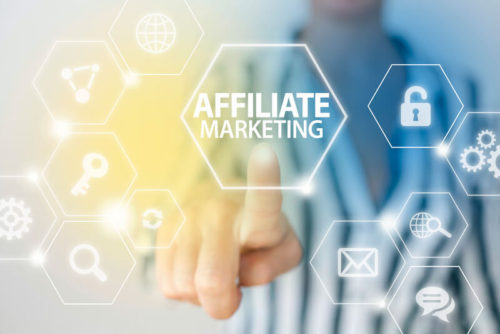
8. Affiliate Marketing
The last on our list is Affiliate Marketing. It is an online marketing strategy where you work with marketers. The marketers will promote your product, and you pay them a commission for each successful referral or sale made.
In a nutshell, you create an affiliate marketing program for your product and determine how much you will pay and what are the rules. Launch your affiliate program either through your own website or list it through platforms such as ClickBank or CJ affiliates.
If the program is launched through your own website, you will have to advertise this to draw the attention of affiliate marketers who would help promote this to their lists or to consumers either organically or inorganically. Click here to learn more about ClickBank and How affiliate marketing works
Summary: What Are the Different Types of Internet Marketing?
Of all the different types of internet marketing we discussed above, what will work for you will depend on your marketing goals and budget. If you have a large goal and budget, I would suggest starting with paid ads through either Social Media Advertising or SEM. If your budget is low, stick with Organic marketing. It takes long for Organic marketing to produce result but there is a snowball effect. When you rank, there is no looking back.
Also, always be aware of your competition. The saying that in order to succeed, you need to find a balance between doing the right thing and doing things right. When you are starting off, you don't want to choose a marketing strategy in which your competition is against established brands. The best way is to start small and then work your way up.
Expert Tip - Choose only a maximum of two marketing strategies discussed above. Choose those that you are capable of doing and those that are appropriate for your business. Focus all your effort in making these strategies work before moving on to the next. This will help maximise your return.

